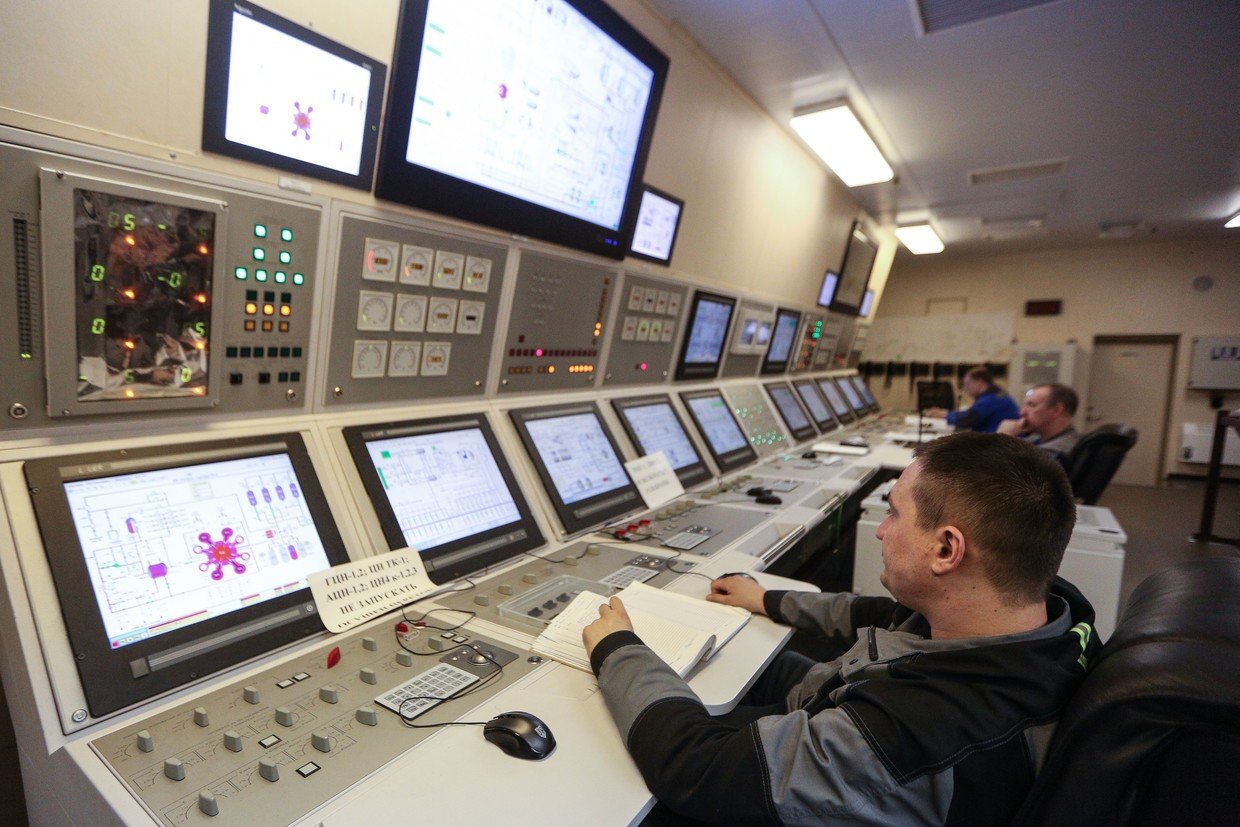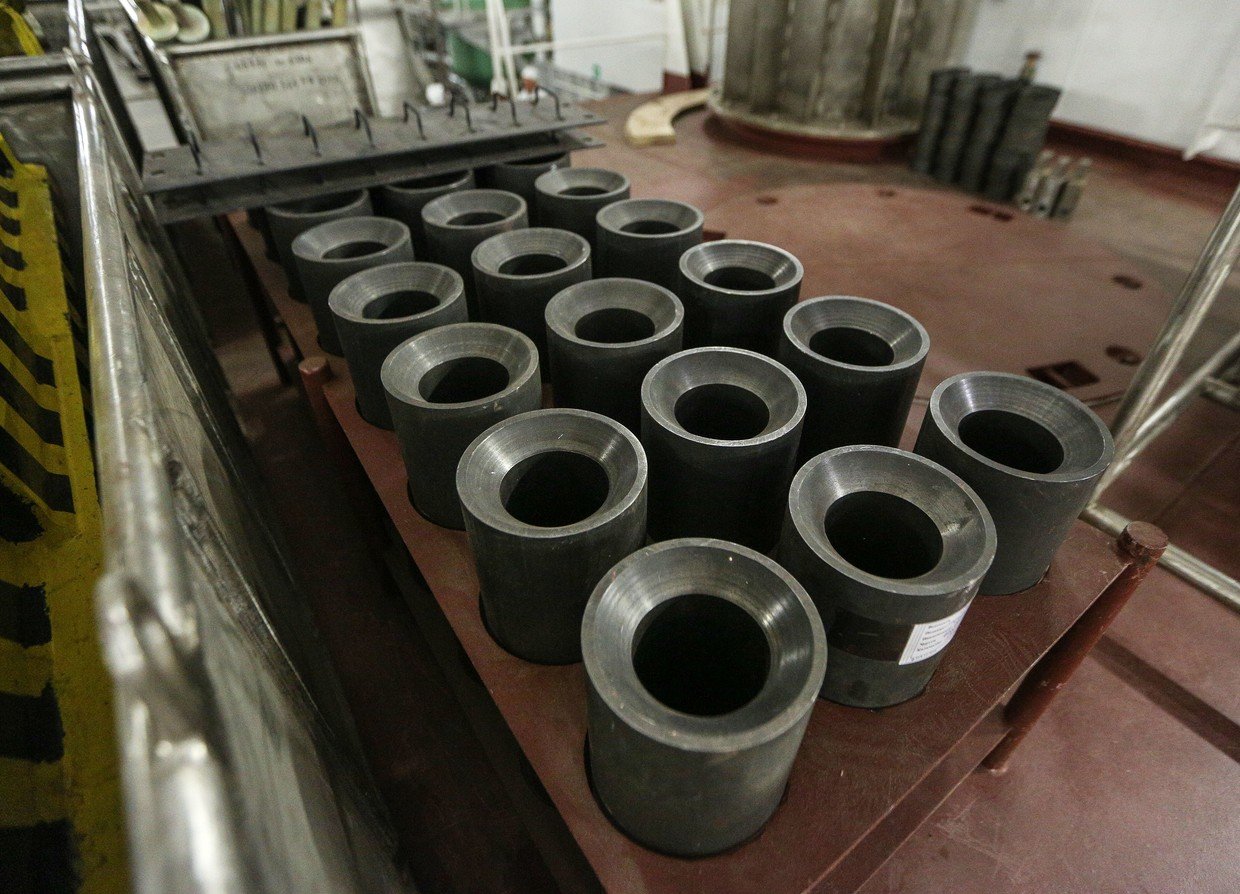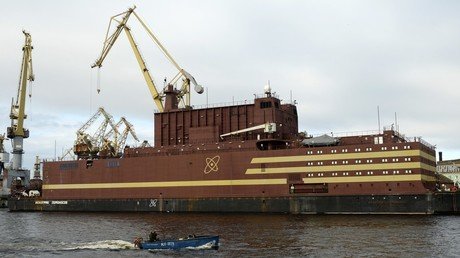Western media dubs Russia’s mobile power plant ‘floating Chernobyl’, but is it?

With the horrors of HBO’s dramatization of the 1986 Chernobyl disaster fresh in mind, the Western media has begun fearmongering about Russia’s latest nuclear innovation – a floating power plant built to serve the isolated Arctic.
The mainstream media has dramatically dubbed the plant a “floating Chernobyl” – but is it all just hyperbole? In reality, the plant is based on long-established technology and concerns over nuclear Armageddon in the Arctic seem overblown to say the least.
The Russian-built Akademik Lomonosov was issued a 10-year operating license in June and is slated to be towed to its final destination – the small Arctic port of Pevek in the remote Chukotka Region. There it will begin supplying heat and electricity to local consumers before year’s end.
But the opportunity for Russia-bashing, however, that the story offered was too good to pass up. ‘Nuclear’ plus ‘Russia’ must equal disaster, the logic goes. Headlines warned that “Russia Is About to Tow its ‘Floating Chernobyl’ Through the Arctic Circle” and the “World’s only floating nuclear power station dubbed ‘Chernobyl on ice’ launched by Russia.”
There is, in fact, little in common between the plant featured in HBO’s hit series and the new ‘Floating Nuclear Thermal and Power Plant’ (PATES), as the facility is officially called. If anything, it was built to prevent a similar disaster from occurring again.
Also on rt.com Nuclear power becomes critical to Arctic dominanceNuclear prefab
So, let’s take a look under the iron skin of this allegedly dangerous Chernobyl descendent, as depicted by the Western media. What are the threats and risks?
The plant’s reactor is a nesting doll of protective layers, from the hermetic body of the fuel rod assembly preventing uranium fuel from seeping into the core, and up to the sealed walls enclosing the nuclear-related rooms, in which there is negative air pressure to prevent anything from leaking out.
The ship can be towed to wherever it is needed, moored and connected with the land infrastructure, where it can stay for decades, receiving on-site maintenance as needed.

KLT-40S reactors are designed so that even if all the human operators suddenly fell unconscious and the power supply was cut, it would still shut itself down if necessary. Additional safety measures are also in place, including spring-loaded neutron-absorbing rods which push inside the core and drive it subcritical in case of power failure.
The ship itself was also designed with safety in mind and given features for extra endurance. The superstructure ensures that force from any kind of collision would be spread away from the reactors, be it a collision with another ship, rocks, or even a falling aircraft. Its engineers say the Akademik Lomonosov would also be able to withstand severe storms with winds of 80 meters per second.
Scale matters
The key difference between a regular ground-based nuclear plant and one placed on a ship is scale. The blocks of the Chernobyl plant were rated to produce 1,000MW of electric power each – whereas the two KLT-40S reactors on board the Akademik Lomonosov produce about 70MW combined. Such are the limitations of nuclear real estate on a ship.

A small nuclear reactor can compete with the conventional propulsion systems of a ship. If you want your submarine to stay hidden from the enemy for weeks and months in a row, you have no other choice but to go nuclear. Need the extra power to smash your 21,000-ton icebreaker through thick ice? Uranium may be better than diesel for the job. In fact, KLT-40S come from the Russian nuclear icebreaker fleet, where the reactor had a venerable operational record of over three decades and somehow managed not to turn the Arctic into a radioactive wasteland.
However, a dedicated floating power plant needs to compete with other types of power plants, and when it comes to producing cheap power, scale is the king. First, you sink millions of dollars and years of construction work into one large facility and then spend years with return on the investments by providing affordable energy to as many consumers as possible. The small-scale PATES is the opposite – relatively quick to build but generating power at high cost.
Niche market
Where the ship can be economically feasible – at least according to the estimates of the producer, Rosenergoatom – is in really remote locations, preferably with a harsh climate.
“Our calculations show that if its capacity is used 100 percent, the PATES is competitive with other sources of power in Chukotka,” Pavel Ipatov, the deputy head of the company, told RT.
The cost of an already expensive regular power plant, nuclear or otherwise, may become astronomical in the middle of nowhere. Think of transporting building materials and equipment a few thousand kilometers by sea. Bonuses for working in freezing weather. Storage for extra fuel that would be needed in case strong storms cut the facility from the regular supplies for an extra month or two. Suddenly, the price of electricity generated by a factory-ready floating plant does not seem that high.
Russian project
Russia is unique in having an abundance of highly remote spots along its 24,000km Arctic coastline, where people live to harvest some of the region’s mineral riches. This explains why Russia has its nuclear icebreaker fleet, from which the PATES project stems.
Pevek, the destination of the Akademik Lomonosov, is close to one of the largest reserves of tin in Russia, while the greater Chukotka area is famous for gold mining. The location also has an ageing energy infrastructure. There are two big power plants there – a nuclear plant built in 1974 and a coal plant operating since 1944. The local energy grid is isolated, meaning there will be shortages if one of the plants shuts down – hence the floating power plant as a stopgap.
Also on rt.com WATCH Russian nuclear icebreakers conquer the Arctic in stunning time-lapse & drone VIDEORosenergoatom is already developing a more advanced version of the floating nuclear power plant which will have the latest generation of Russian nuclear-propelled icebreaker reactors installed. The Russian Arctic will likely be the target market, although the company also pitches its niche products to island nations that have few energy resources of their own.
Like this story? Share it with a friend!















